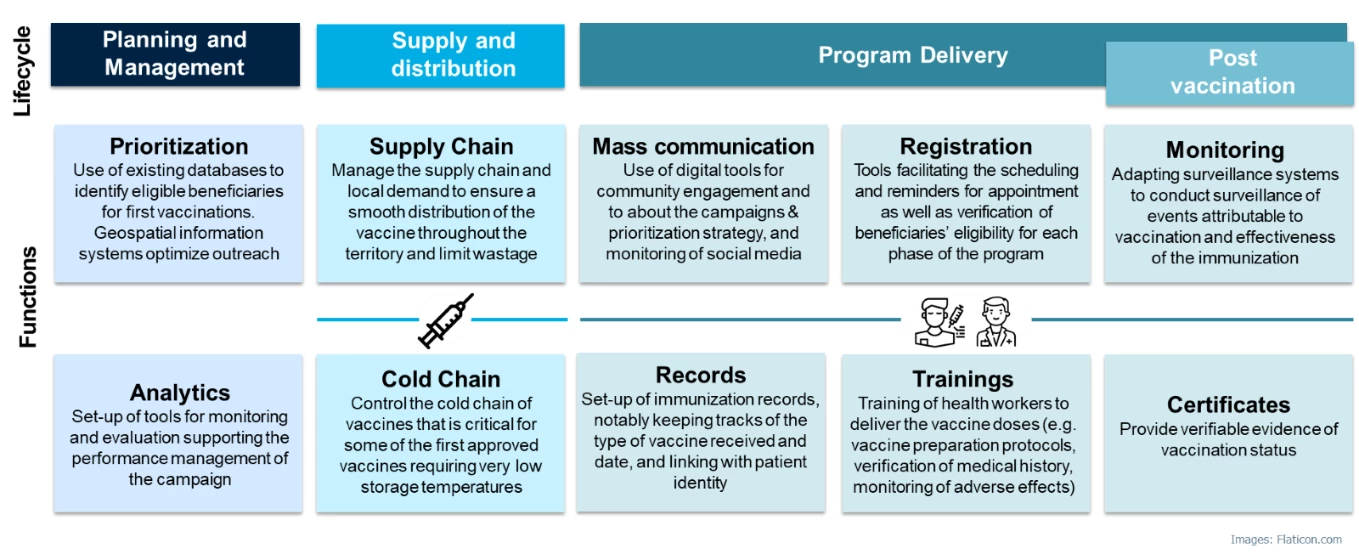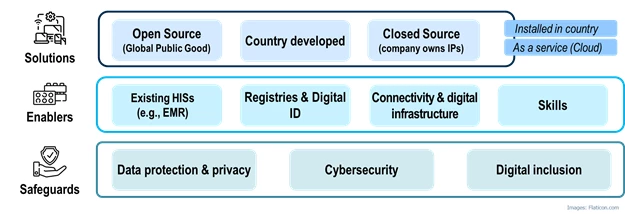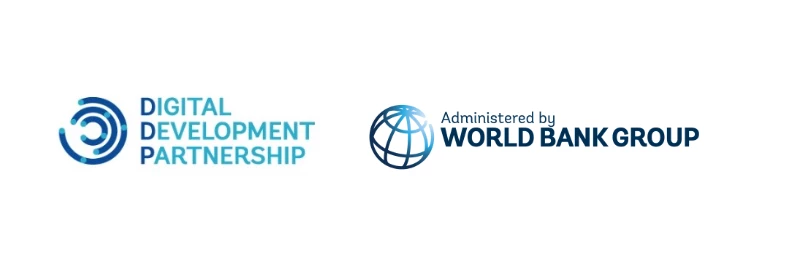 Photo: Dominic Chavez
Photo: Dominic Chavez
This blog is part of a series on digital safeguards and enablers for COVID-19 vaccine delivery.
Vaccination is a high-priority activity in the fight against the COVID-19 global pandemic. Reaching high coverage and speed of vaccine deployment will be key to starting an inclusive and resilient recovery of our economies and societies. This is why the World Bank has launched a fast and comprehensive COVID-19 response to help poor countries purchase and distribute vaccines while protecting the most vulnerable people.
A mass vaccination of adults, with strategic prioritization of certain groups and different types of vaccines at such a scale and urgency, has not been done before. A previous blog highlighted how countries can leverage digital technologies to make this herculean mission easier. This includes deploying highly scalable, reliable, and interoperable digital (software) solutions to identify and prioritize recipients, track inventory and supply chains, distribute doses efficiently, monitor uptake, effectiveness and adverse events in real times, as well as provide certificates as proof of vaccination.
Digital solutions can support functions across the vaccine deployment lifecycle, from planning and management, to supply and distribution, program delivery, and post vaccination. Different actors are involved at each step and each function has its specialized requirements. For example, tracking the temperature of vials is vastly different from registering candidates for vaccination.
Technology is not a silver bullet and context is key
Crises always attract technology solutions with mixed success. To balance the opportunities and address risks associated to digital solutions, it is important countries make informed, context-appropriate technology and design choices. The ability for such solutions to help, rather than hinder, also depends on a country’s digital readiness, such as the quality and coverage of its internet, digital literacy of workers and the population, and data protection and cybersecurity.
Countries will most likely need a combination of solutions, ideally designed in a modular, interoperable and coherent way, so they can work and talk together seamlessly. There is no single solution that can address all the functions of the delivery lifecycle. Over the past decades, countries have also invested in the digital transformation of healthcare and might already have deployed health information systems, immunization registries, and electronic medical records systems. Before looking at deploying new solutions, it is important for countries to assess the potential of their existing digital assets to address the COVID-19 response specific needs , and how investments today can contribute to longer-term digital health initiatives. Where possible, solutions should align with the whole-of-government digital infrastructure and initiatives such as foundational ID systems, government data hosting, data exchange layers and open APIs, and other administrative data sources.
Having systems that implement standards should also be a priority to ensure that systems can talk to each other. There are established international standards in the health sector, notably HL7 FHIR for exchangeability and interoperability of data. There are also a number of emerging initiatives (such as WHO, VCI, CCI, Commons, IATA) to define international standards for COVID-19 vaccination certificates.
Digital safeguards will minimize risks
Deploying digital solutions also requires the establishment of safeguards. This includes ensuring data protection and cybersecurity, especially considering how the health sector has been facing increased in cyber-attacks during the pandemic. In this regard, the use of decentralized technologies for digital vaccine certificates offer an opportunity to empower people with control over their personal data. And it includes digital inclusion. Anything digital must be accompanied with analog alternatives, especially for those without access to internet or phones, as well as people who have lower digital skills and literacy. This includes, for example, having offline registration, paper vaccine certificates, and not requiring specific IDs in order to access the vaccination programs.
The World Bank Group response
For the above reasons, the World Bank’s Digital Development and Health, Nutrition, and Population Global Practices are working closely together to monitor developments around the world in real time and to advise countries on how to navigate the immediate urgent needs to support successful vaccination campaigns, as well as how to exploit the longer-term opportunities for investments today to build sustainable, foundational digital health infrastructure to transform how healthcare is delivered and to be resilient to the next health crisis.
Related:
Digital Development at the World Bank
Digital Development Partnership
This work is supported by the Digital Development Partnership, administered by the World Bank. For more information or how you can receive assistance with these topics, please contact Digital4Vaccines@worldbankgroup.org








Join the Conversation